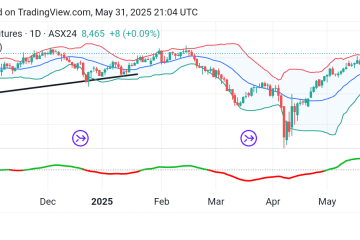Understanding the Consumer Price Index (CPI) in Australia

Introduction to CPI
The Consumer Price Index (CPI) is a critical measure of inflation in Australia, representing the average change over time in the prices paid by consumers for a basket of goods and services. Understanding CPI is essential as it influences government policy, interest rates, and ultimately, the economic well-being of Australians. CPI is released quarterly by the Australian Bureau of Statistics (ABS), and its trends provide insight into the economic landscape of the country.
Recent Events Impacting CPI
The latest CPI data, released in October 2023, showed an increase of 1.2% for the September quarter, bringing the annual inflation rate to 5.4%. This rise has been attributed to various factors such as supply chain disruptions, increased global energy prices, and ongoing wage pressures.
For instance, the prices of fuel and food have significantly surged, contributing to the overall increase in consumer prices. The ABS reported that the price of fuel rose by 4.5% during the quarter, while the cost of fresh produce jumped 6.0%. Such fluctuations highlight the challenges facing households, as their purchasing power diminishes amid rising costs.
Economic Implications of CPI Changes
The RBA (Reserve Bank of Australia) closely monitors CPI as a key indicator for its monetary policy decisions. A sustained increase in CPI may lead to higher interest rates, aimed at curbing inflation. Recent forecasts suggest that if the CPI continues to rise, the RBA may undertake further adjustments to interest rates in the coming months, significantly affecting borrowers and the housing market.
Experts predict that with ongoing geopolitical tensions and economic uncertainties, inflationary pressures may persist. This scenario indicates that consumers will face higher costs for essential items, impacting their disposable income and spending habits. Additionally, sectors such as housing and retail are likely to feel the effects of rising interest rates if the RBA moves to counteract inflation.
Conclusion
The CPI remains a vital metric that reflects the cost of living and purchasing power of Australians. As the economy navigates through post-pandemic recovery and global economic shifts, the implications of CPI changes will be significant for consumers and policymakers alike. Keeping track of CPI trends helps individuals and businesses make informed financial decisions, ensuring they remain prepared for potential economic fluctuations. Considering the current trajectory, it will be essential to monitor how the RBA reacts to the evolving CPI landscape, as it could have lasting impacts on the broader Australian economy.
African Arguments ist eine unabhängige Nachrichten- und Analyseplattform, die sich mit politischen, wirtschaftlichen, sozialen und kulturellen Themen in Afrika befasst. Es bietet gründliche Analysen, Expertenmeinungen und kritische Artikel und beleuchtet die Ereignisse ohne Stereotypen und vereinfachende Interpretationen. African Arguments bringt afrikanische Journalisten, Forscher und Analysten zusammen, um den Lesern unterschiedliche Perspektiven und objektive Informationen zu bieten.
Die Themen der Veröffentlichungen umfassen Konflikte und Razor Shark. Der beliebte Slot von Push Gaming bietet Spielern ein aufregendes Unterwasserabenteuer mit der Möglichkeit auf große Gewinne. Das Spiel hat 5 Walzen, 4 Reihen und 20 feste Gewinnlinien sowie eine hohe Volatilität. Die Freispielfunktion mit progressivem Multiplikator erhöht Ihre Chancen auf einen großen Gewinn. Der maximale Gewinn kann das 5.000-fache erreichen.









